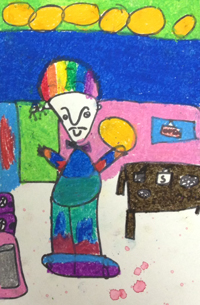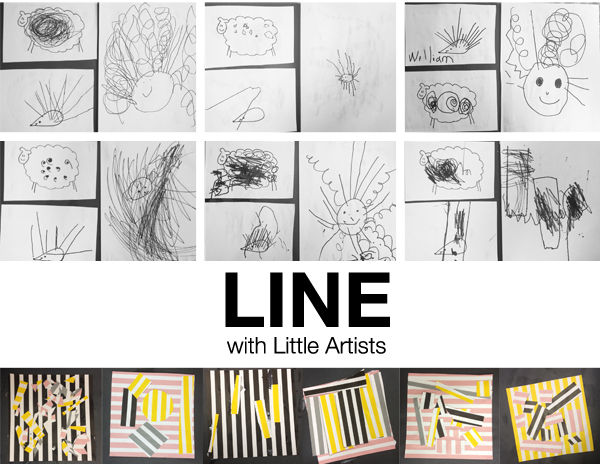Are you an art docent?
Teach kids about Joan Miro this month! This project introduces Joan Miro & self-portraits and it is recommended for kids in K-2 grades.
Silly Self portrait
Start with a presentation.
When you introduced Joan Miro and his work to the kids, ask them to sketch a head (with a sharpie). Show kids that they can do whatever shape they want (you may even sketch those on a blackboard – oval, square, heart…) and then show them how to make the eyes and the U-shape nose.
Then the kids can create whatever body shape they want. Just remind them to keep it simple and when they are done to ‘divide’ it or ‘visually cut’ it into several segments (they are going to be coloring each of them differently so they want to have several of them).
When they are done, give them the oil pastels (yellow, red, blue, green, black and white) and ask them to color the picture (not the background). The ones that finish early can add their favorite animal or something they like to do (soccer ball, books, etc.).
In the end, ask the kids to bring the picture over and spray it (with them) with the watercolor spray (just some watercolors in a spray bottle). For this part, make sure you have something covering the surrounding area (newsprint, mat, shower curtain or old plastic tablecloth). And be careful when you lift the picture – the watercolor may drip a little.
DONE!
Here are the labels to print out for this project and attach them to kids’ artworks.








































